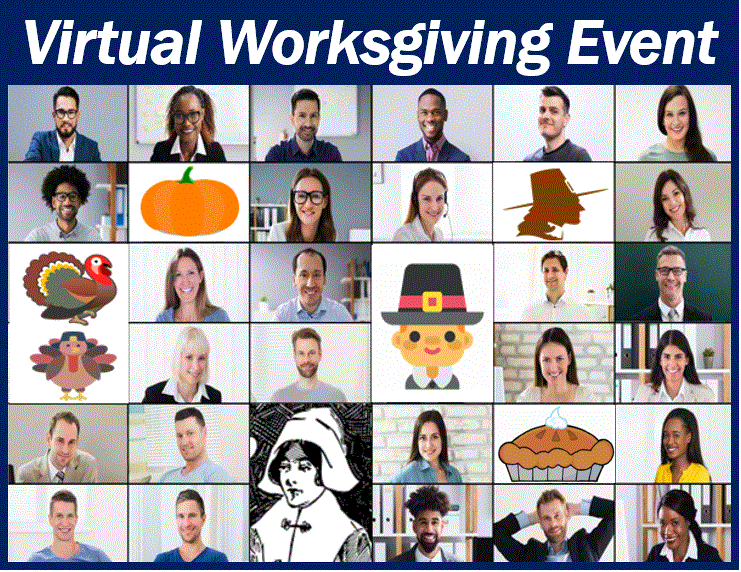Worksgiving is a word that people on social media have started to use to describe any Thanksgiving event that happens at your workplace. It’s become especially common for small businesses to do a Worksgiving event given that in a small company, you’ll typically know most or all of your employees.
This year, especially, with the coronavirus pandemic, lockdowns, and much more WFH or remote working, a virtual Worksgiving event may be your best option. Here’s how you can plan and execute a virtual Worksgiving event with the best of them. WFH stands for Working from Home.

1. Brainstorm Ideas for the Worksgiving Event
First off, you need to think about what ideas you might be able to use for your Worksgiving event. Have you recently had a work-related virtual event? Do all your employees have the ability to call in? Do you have a budget for this kind of online get-together?
You can brainstorm ideas on your own, and then discuss them with your employees. When people have invested their own thoughts into the organization of something, they are more likely to take part and encourage others to do that same.
2. Confirm Employee Interest
It’s important to make sure you’ll have enough people who will actually want to attend a virtual Worksgiving event. Make sure you don’t actually hold it over the Thanksgiving weekend; the Tuesday or Wednesday before Thanksgiving is typically a better option. Give employees the choice to give you feedback on the idea, then make sure there are at least a few who want to help you organize it.
3. Plan the Event with Employees
Next, plan the event with your employees. You want to be involved in the process, but you also want to give your employees the ability to spearhead the event. Make sure you know how you’re going to host it, what you’re going to do when it starts, and how you’re going to make sure everyone has a good time, even though the whole celebration will take place virtually, i.e., via the Internet..
4. Keep the Event Short and Sweet
If you and your employees or colleagues have shifted much of their work online, remember that they are much more likely to get tired pretty easily during the event. Video conferences are significantly more tiring that traditional telephone calls.
It is crucial that you time the whole thing with that in mind. Ideally, the whole celebration should not last for more than one hour.
5. Make Sure You Gather Feedback

After the event is over, ask your employees what they thought, i.e., get feedback. What did they like and dislike. Did more than two of them mention something that was missing? The more comments you can collect, the better your next virtual office party will be.
Working habits have changed significantly during the coronavirus pandemic. Ergonomists, psychologists, and tech experts believe that some of it will continue, even when COVID-19 is over. So, make sure you are ready.
Conclusion
Work-related events can be a great option for bonding with your employees, especially if you’re in a small business. If a growing number of your employees are working remotely, staying in contact with them is important. Motivating people when they are not physically with you requires a different approach. If you want to maintain or even improve worker loyalty and staff retention, make sure you all keep in touch.
You could organize Zoom coffee or lunch breaks, online tours of people’s homes, hold company-wide events, play virtual games (especially icebreaker ones), and set up a remote book or pet clubs. You could also organize virtual get-togethers to celebrate achievements.
Interesting related article: “Hybrid events – strategy and execution.”

